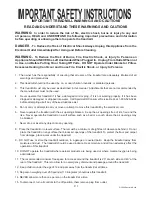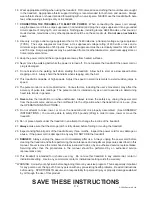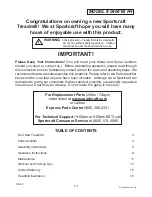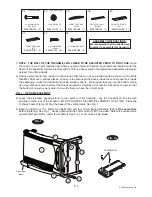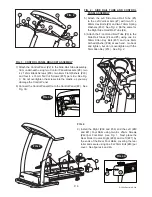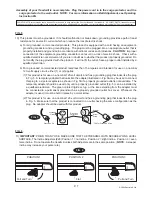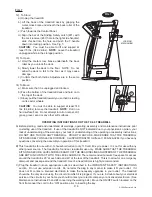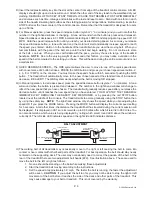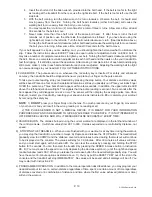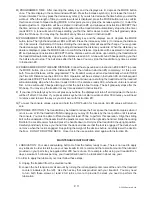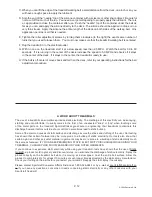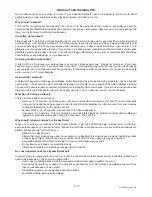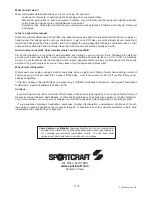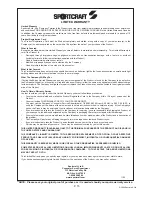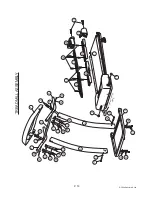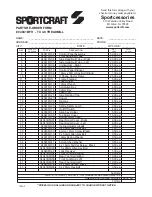
P. 14
© 2004 Sportcraft, Ltd.
Come Explore our Website!
(www.sportcraft.com) Join our mailing list to
receive more information on product updates and event announcements.
Or, complete your warranty registration on-line. You can even order
replacement parts, and learn more about our company.
What should I wear?
Wear comfortable clothing that allows you to move freely. For example:
· Loose pants or sweats, or exercise tights, depending on your personal taste.
· Man-made “wicking fibers,” such as polyester, CoolMax, or Lycra that don’t just soak up and hold the sweat like
cotton does and can be more comfortable when you sweat.
· Synthetic socks, which also don’t absorb all your sweat and can help fend off blisters since they don’t stay wet
and soggy.
Is there a special technique?
Stand tall, with shoulders back, chest lifted, and abdominal muscles tight. Avoid leaning forward from your waist, or
hanging onto the rails except to catch your balance or to get on and off. Use your arms strongly as you swing them
forward and backward from the shoulder, and don’t neglect the swing backward! Walkers should also land on their
heels with toes lifted high and roll through the entire foot. Runners should land quietly and softly.
How do I stay motivated? Does it matter where I put the treadmill?
Set up the treadmill in a room that is well-ventilated and inviting so you want to go there. Windows are helpful so
you can get air and look outside. A music system can help entertain and motivate, as can a TV or VCR. Try watching
movies or your favorite sports team during a workout! Also, experiment with varying your intensity and incline during
a workout. Log your progress so you can keep track of your changes and improvement.
Why should I drink water?
Water keeps your engine running smoothly and safely. Keep a plastic sport bottle of water handy during a workout
and sip as you go. Drink at least 8 to 10 cups of fluids a day - more if you workout or it’s hot. If you feel thirsty, you’re
already dehydrated.
* American College of Sports Medicine (www.acsm.org): ACSM’s Guidelines For Exercise Testing and Prescription/
Sixth Edition, Lippincott Williams & Wilkins, 2000.
Cautions…
· If you are a women over 55 or a man over 45 and have not been exercising regularly, or if you have a family history of
diseases such as diabetes, heart disease, or other health problems such as high blood pressure or high cholesterol,
or you are a smoker, or you are very overweight, consult with a physician before beginning an exercise program.
· If you experience dizziness, headaches, numbness, tingling, disorientation, unsteadiness, shortness of breath,
leg swelling, nausea, headaches, feel unusually fatigued, or experience any other unusual symptoms or pain, stop
immediately and consult with your physician.
Mt. Olive, NJ 07828
www.sportcraft.com
Printed in China


